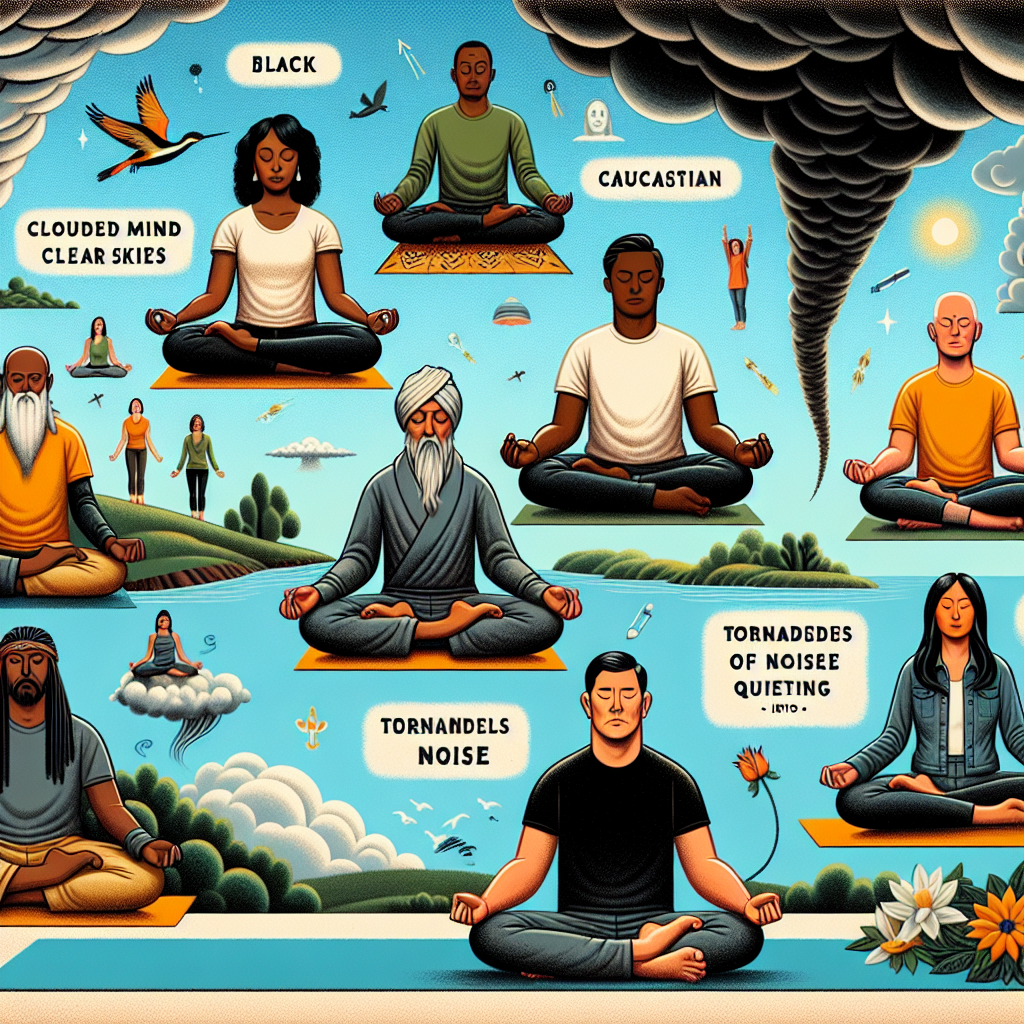Have you ever wondered about the proper way of meditation? With its growing popularity in recent years, understanding the correct method can help you achieve a more meaningful and fulfilling practice. In this article, we will explore the essence of meditation and provide you with key insights on how to meditate effectively. Whether you are a beginner or have been practicing for years, this article aims to guide you towards a path of inner peace and clarity. So, grab a comfortable cushion and let’s embark on this journey together.
Understanding the Basics of Meditation
Meditation is a practice that has been around for centuries, and it involves training the mind to focus and redirect thoughts. The ultimate goal is to achieve a state of deep relaxation and inner calm. While meditation is often associated with spirituality, it can also be practiced for its numerous physical and mental health benefits.
To begin your meditation practice, it is important to understand the basics. Meditation can be done in various ways, but the core principle remains the same – to quiet the mind and bring awareness to the present moment. It is not about emptying the mind completely, but rather observing your thoughts without judgment.
Choosing the Right Environment
Creating the right environment for meditation plays a crucial role in ensuring a peaceful and focused practice. Find a quiet and comfortable space where you can be free from distractions. This can be a designated area in your home or a serene outdoor location. It is helpful to minimize external disturbances, such as turning off your phone or putting it on silent mode.
Additionally, consider the lighting in your chosen environment. Natural light can be calming and uplifting, or you may prefer to dim the lights for a more relaxed ambiance. Experiment with different settings to find what works best for you.

Preparing Your Body and Mind
Preparing your body and mind before starting your meditation practice can greatly enhance the experience. Begin by wearing loose and comfortable clothing that allows for unrestricted movement and deep breathing. This helps to promote relaxation and ease any physical discomfort.
Engaging in gentle stretching or a short yoga session can also be beneficial. This helps to release tension and promotes flexibility, which can aid in assuming the correct posture during meditation. Consider incorporating some deep breathing exercises to help calm the mind and relax the body.
Assuming the Correct Posture
Maintaining the correct posture is essential for a successful meditation session. Start by sitting comfortably on a cushion or chair. Align your spine, neck, and head in a straight but relaxed position. Avoid slouching or straining your back.
Keep your shoulders relaxed and let your arms rest naturally on your lap or knees. Close your eyes softly or lower your gaze to a specific point on the ground. Finding a posture that is both comfortable and supportive allows for better focus and minimizes distractions.

Focusing on Your Breath
One of the key elements of meditation is focusing on your breath. The breath serves as an anchor, keeping you grounded in the present moment. Pay attention to the sensation of your breath as it enters and leaves your body. Notice the rising and falling of your abdomen or the feeling of air passing through your nostrils.
Allow your breath to flow naturally and rhythmically. If your mind wanders, gently bring your focus back to the sensation of your breath. This simple act of observing and returning to the breath helps to cultivate mindfulness and develop concentration.
Clearing Your Mind
Clearing the mind does not mean erasing all thoughts. Rather, it is about observing your thoughts without attachment or judgment and then letting them pass by. As you meditate, thoughts may arise, and your mind may wander. This is natural and happens to everyone.
When you notice your mind wandering, gently acknowledge the thought, and then let it go. Bring your attention back to your breath or the present moment. Remember, the aim of meditation is not to stop thinking but to become more aware of your thoughts and develop a sense of mental clarity.
Dealing with Distractions
Distractions are a common challenge that many meditators face. It could be external noises, bodily discomfort, or even the wandering of your own thoughts. Instead of viewing distractions as obstacles, learn to embrace them as part of the meditation journey.
When distractions arise, try to observe them without getting caught up in them. Acknowledge any discomfort or noise, but redirect your focus back to your breath or chosen point of attention. With practice, you will develop resilience and the ability to maintain focus despite distractions.
Exploring Different Meditation Techniques
There are various meditation techniques to explore, each with its own unique benefits. Some popular techniques include mindfulness meditation, loving-kindness meditation, transcendental meditation, and guided visualization. Experiment with different techniques to find the one that resonates with you and fits your goals.
Mindfulness meditation involves observing and accepting the present moment without judgment. Loving-kindness meditation focuses on developing compassion and kindness towards oneself and others. Transcendental meditation uses mantras or repetitive sounds to reach a state of deep relaxation. Guided visualization involves visualizing positive images or scenarios to promote relaxation and stress relief.
Selecting a Meditation Schedule
Consistency is key in establishing a meditation practice. It is important to set aside dedicated time for meditation each day. Find a time that works best for you, whether it is in the morning, during lunch breaks, or before bed. Aim for at least 10-15 minutes of meditation in the beginning and gradually increase the duration as you become more comfortable.
By incorporating meditation into your daily routine, you create space for self-reflection, relaxation, and inner peace. Remember that the benefits of meditation are cumulative, so even short daily sessions can have a positive impact on your overall well-being.
Seeking Guidance and Support
While meditation can be a personal practice, seeking guidance and support can be immensely helpful, especially for beginners. Consider joining meditation classes or workshops where experienced instructors can provide guidance and answer any questions you may have. Engaging in group meditation sessions can also create a sense of community and motivation.
There are also numerous meditation apps and online resources available that offer guided meditations and tips for beginners. These resources provide a wealth of information and support, allowing you to deepen your practice and explore different meditation techniques at your own pace.
In conclusion, the proper way of meditation involves understanding the basics, choosing the right environment, preparing your body and mind, assuming the correct posture, focusing on your breath, clearing your mind, dealing with distractions, exploring different techniques, selecting a meditation schedule, and seeking guidance and support. By incorporating these aspects into your meditation practice, you can experience the profound benefits of inner peace, stress reduction, and overall well-being. Remember, meditation is a journey of self-discovery and self-care, so be patient, kind to yourself, and enjoy the process. Happy meditating!
